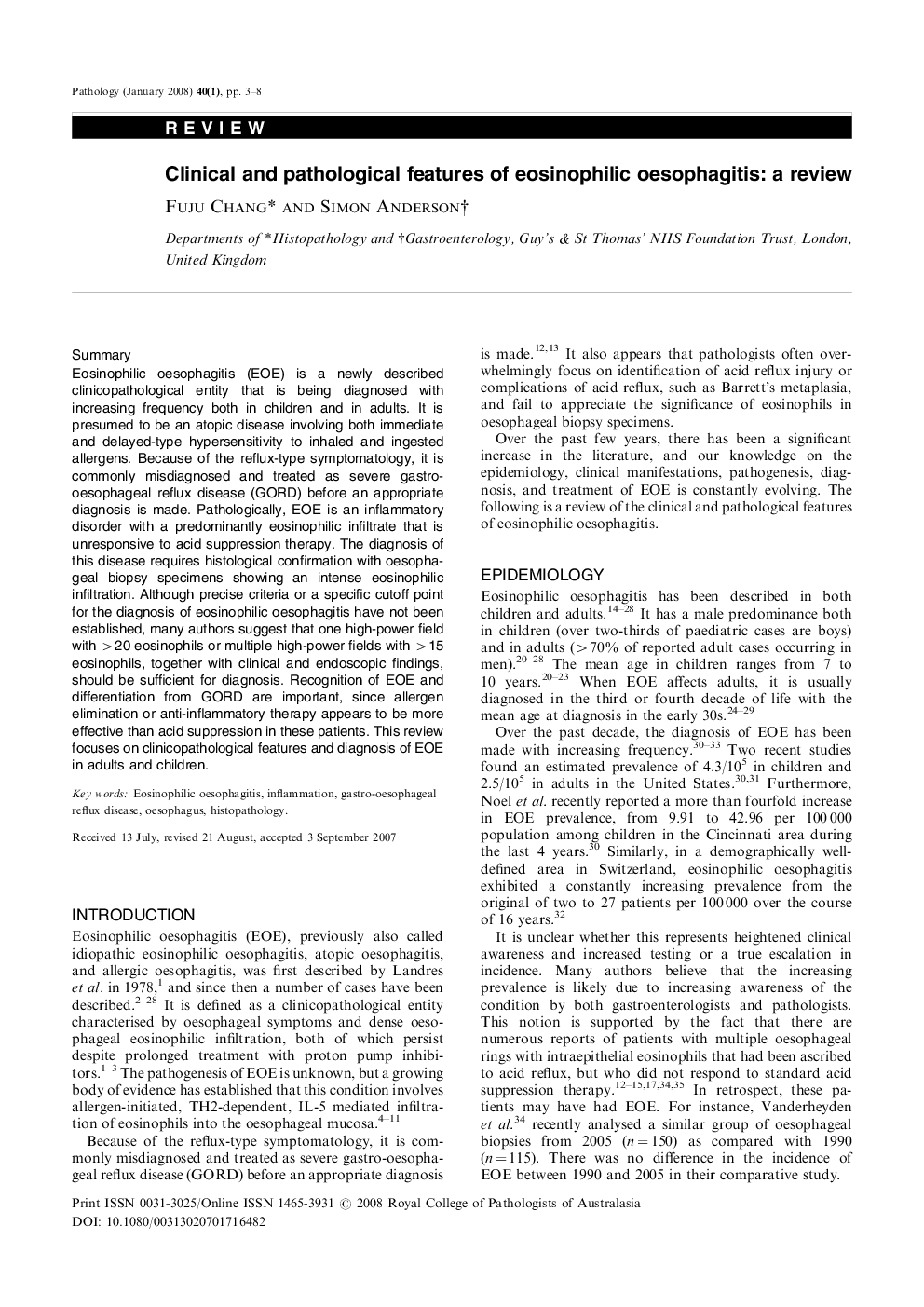| Article ID | Journal | Published Year | Pages | File Type |
|---|---|---|---|---|
| 106112 | Pathology | 2008 | 6 Pages |
SummaryEosinophilic oesophagitis (EOE) is a newly described clinicopathological entity that is being diagnosed with increasing frequency both in children and in adults. It is presumed to be an atopic disease involving both immediate and delayed-type hypersensitivity to inhaled and ingested allergens. Because of the reflux-type symptomatology, it is commonly misdiagnosed and treated as severe gastrooesophageal reflux disease (GORD) before an appropriate diagnosis is made. Pathologically, EOE is an inflammatory disorder with a predominantly eosinophilic infiltrate that is unresponsive to acid suppression therapy. The diagnosis of this disease requires histological confirmation with oesophageal biopsy specimens showing an intense eosinophilic infiltration. Although precise criteria or a specific cutoff point for the diagnosis of eosinophilic oesophagitis have not been established, many authors suggest that one high-power field with >20 eosinophils or multiple high-power fields with >15 eosinophils, together with clinical and endoscopic findings, should be sufficient for diagnosis. Recognition of EOE and differentiation from GORD are important, since allergen elimination or anti-inflammatory therapy appears to be more effective than acid suppression in these patients. This review focuses on clinicopathological features and diagnosis of EOE in adults and children.
